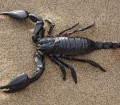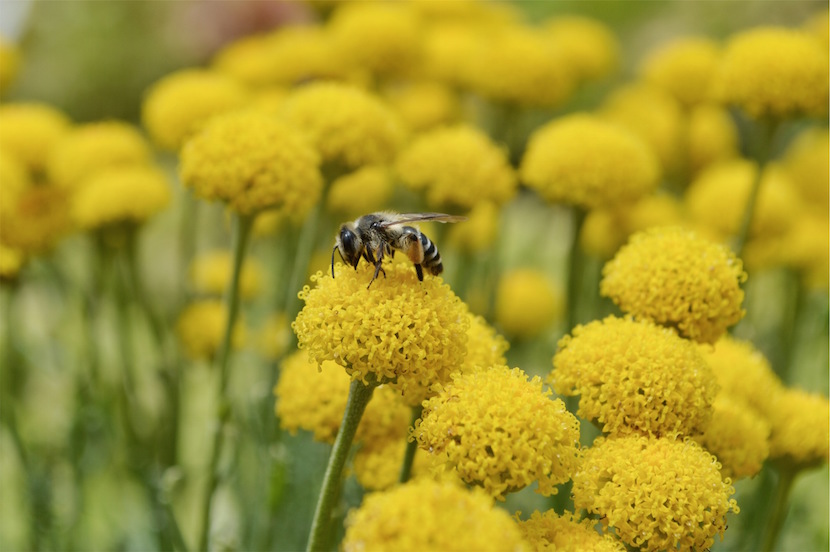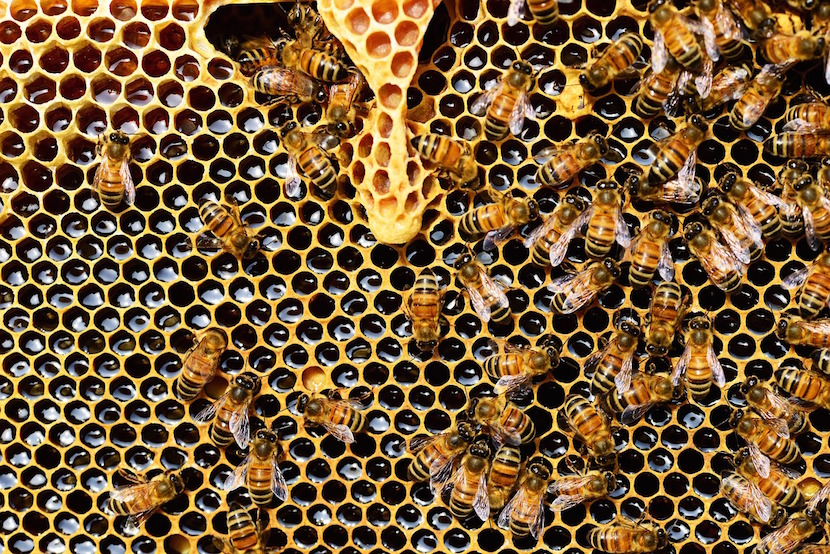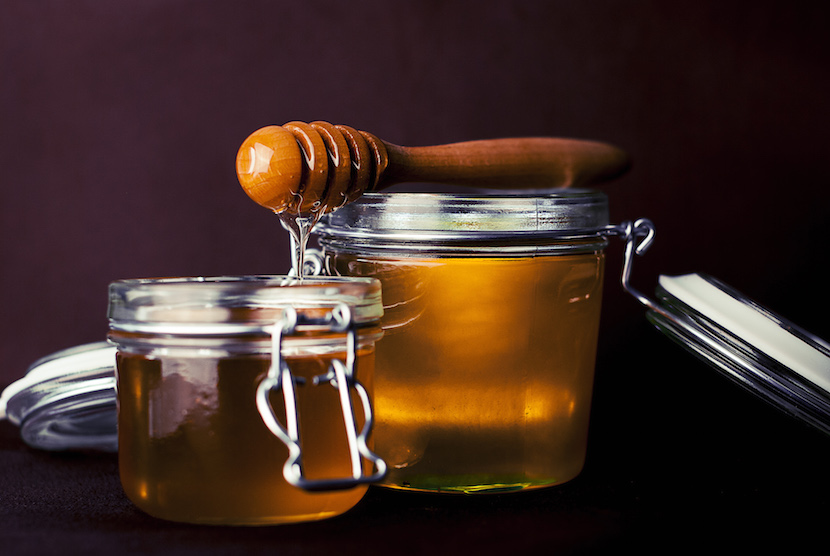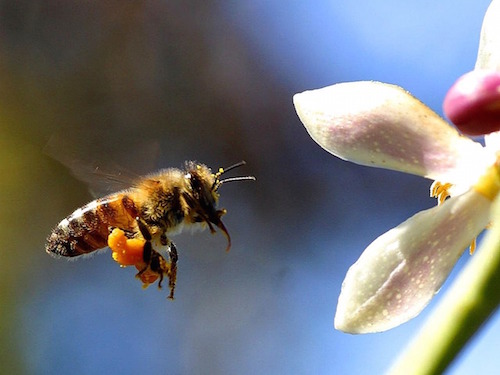The Western Honeybee (Apis mellifera) are the bees we see throughout North America. Originally brought to the New World in the 17th Century, Honey bees are now found on all the continents except Antarctica. The Bees thrive in temperate and tropical regions where the climate is stable and they are able to collect plenty of nectar and pollen from the plants and flowers in the area. Surviving the colder winter months is the main reason Bees produce honey so that they will have a food supply year round when some plants may go dormant, and in turn Bee society is organized for the constant production of honey and care of the hive.
There are three distinct roles in a Bee colony. Each hive will have one Queen, a few hundred male Drones and several thousand female workers. Number one priority is the Queen. She is larger than all the other females and after mating is occupied only with the laying of eggs in the hive. The Queen is tended and fed by smaller female Worker Bees.
The Queen can lay male eggs at will, as they only require one set of chromosomes. They are only allowed to be present in the hive during spring and summer and will eventually be expelled from the hive, once their services are no longer needed after the mating season. Drones are recognizable for their larger eyes (necessary to spot flying Queens to mate with) and lack of sting. Contrary to most beliefs, Drones do not perform work for the hive.
Female bees are produced by using two sets of chromosomes including the genetic material of males the Queen had previously mated with. These female Worker Bees perform all of the necessary tasks for the building, feeding and maintaining the hive and the colony. “House Bees” form the perfectly formed hexagonal comb by using their mouths to form the wax they produce from secretion glands on their abdomens. The cells will then be used to store honey, eggs or young in separate areas of the hive.
House Bees also maintain the hive by making repairs, regulating temperature by beating their wings, produce honey, guard the hive, tend young, and feed the Queen and male Drones. Their work load is so high that female workers have a limited lifespan compared to that of the years lived by a Queen and months of a Drone. Worker Bees literally work themselves to death in a matter of weeks during the busiest parts of the season. The other Workers known as “Field Bees” forage outside the hive for pollen and nectar for feeding the hive and the production of honey.
Field Bees use the pollen baskets on their legs called a corbiculum to store pollen and will swallow nectar that they store in a second stomach. Flying up to three miles from the hive, the Bees out foraging also help pollinate plants as they go from flower to flower. Up to one third of all food consumed by humans is pollinated by Bees- Thanks little guys! Once the pollen and nectar are returned to the hive, honey production begins. Honey is produced when the foraging Bee returns to the hive and regurgitates all of the nectar collected in its honey stomach. (yes, this means regurgitation, not once, but- twice!) During the trip home the nectar has already begun to be broken down by enzymes. After regurgitation, a second Worker in the hive swallows it and regurgitates the nectar into a cell where the Workers in the hive fan the liquid nectar with their wings until it loses the majority of its water content and has evaporated and turned into concentrated honey. It is then sealed in the cell by a wax covering where it will be stored until the hive needs it.
The honey in its cell does not go without notice. Bears, Badgers and humans of course, have all discovered the delicious taste and easy calories that honey provides. Interestingly, the source of the nectar used by the Bees to make honey influences the taste and color. Human consumption of honey dates back over 8,000 years and bee keeping was practiced by the ancient Egyptians. Since then humans have come to rely on the industry of Bees for not only delicious honey, and the pollination of crops but the wax of the comb itself which is used for candle making, polishes and my favorite- surfboard wax.
So the next time you see a bee, give her room to do her job and thanks them for all of the benefits they give to the plants, humans and bears too!

